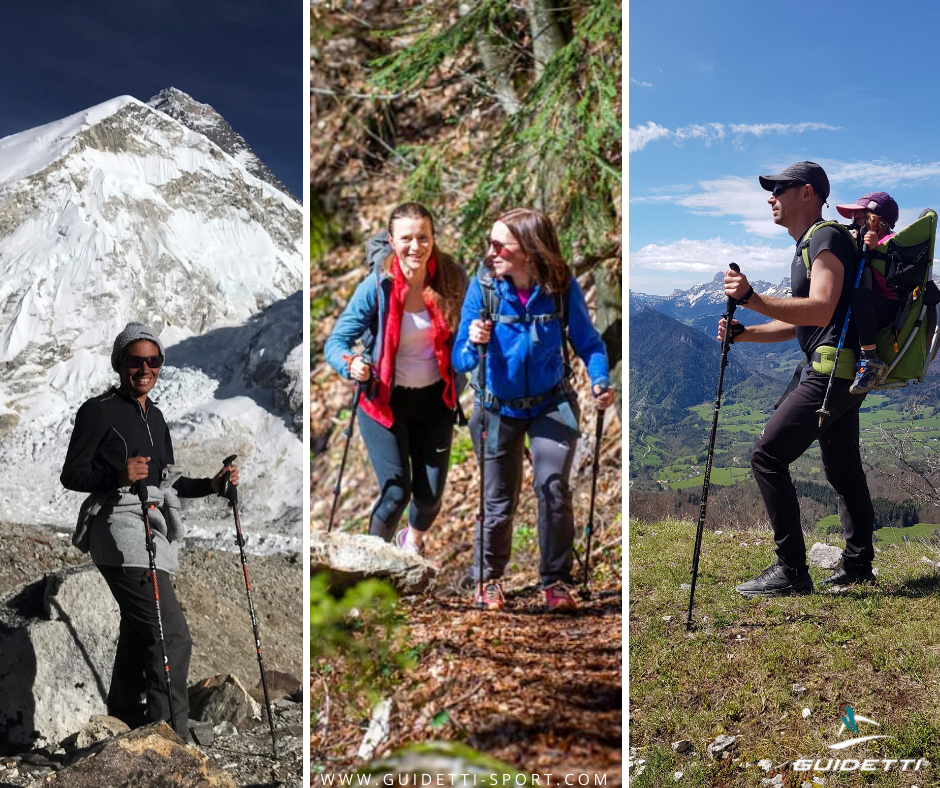Customize your poles! WORLD EXCLUSIVE: the first poles with a 100% customizable design
Content not available
Customize your poles! WORLD EXCLUSIVE: the first poles with a 100% customizable design

Unlike Nordic walking, the use of poles in classic walking and hiking is not essential. Over short distances or on smooth, even terrain, the difference is not necessarily very noticeable. On the other hand, over longer distances and steeper terrain, poles will become your best allies.
The poles act as two additional lower limbs! This allows the weight of the backpack to be distributed over 4 supports instead of 2.
Poles are a valuable aid on slippery (ice, mud) or unstable (scree, snow) terrain. They will also help you to sound out the terrain before setting off: check the stability of a stone or the height of snow or a watercourse, for example.
These two additional supports make it possible to overcome obstacles more easily: go over roots, tree trunks, rocks or ford a torrent.
By distributing the body weight over two additional supports, the load borne by your joints (knees, ankles, hips, spine, etc.) is significantly reduced. This is especially true if you are carrying a heavy pack and during descents.
The thighs and legs won't be the only parts of the body working! By engaging the upper body, we improve our pulling effort, therefore we gain power and speed.
Using poles forces the hiker to adopt a more comfortable position, less arched. This better position opens the rib cage more and allows for better breathing – a significant advantage when exercising, especially at altitude!
Using just one walking pole can be enough on easy, flat paths (walks around your home, a lake, or in the forest). It can also be helpful for all movements for someone who is unsure of their footing.
For such use, we advise you to avoid always holding the pole in the same hand, as this could cause the body to work asymmetrically.
However, for all other uses, it is recommended to use two poles simultaneously to benefit from all the advantages mentioned above.
We have just seen that poles provide real benefits to hikers. Do they have any drawbacks?
Ultimately, over the same duration and the same effort, a hiker who uses poles will tire less and avoid the risk of injury, both in the short and long term.
To go further and help you choose the right poles, do not hesitate to consult our following articles:
- Choosing your walking poles (general advice)
- Choosing your hiking poles
- Choosing the right Nordic walking poles
- Choosing the right trail poles


